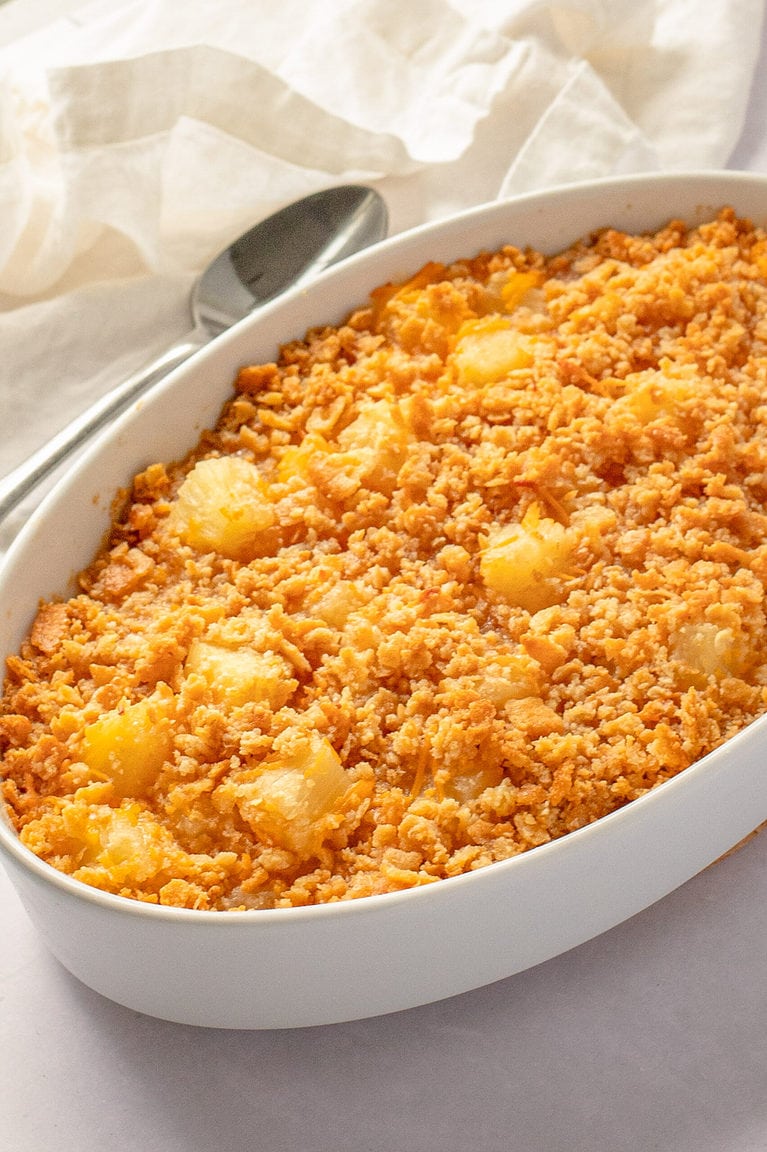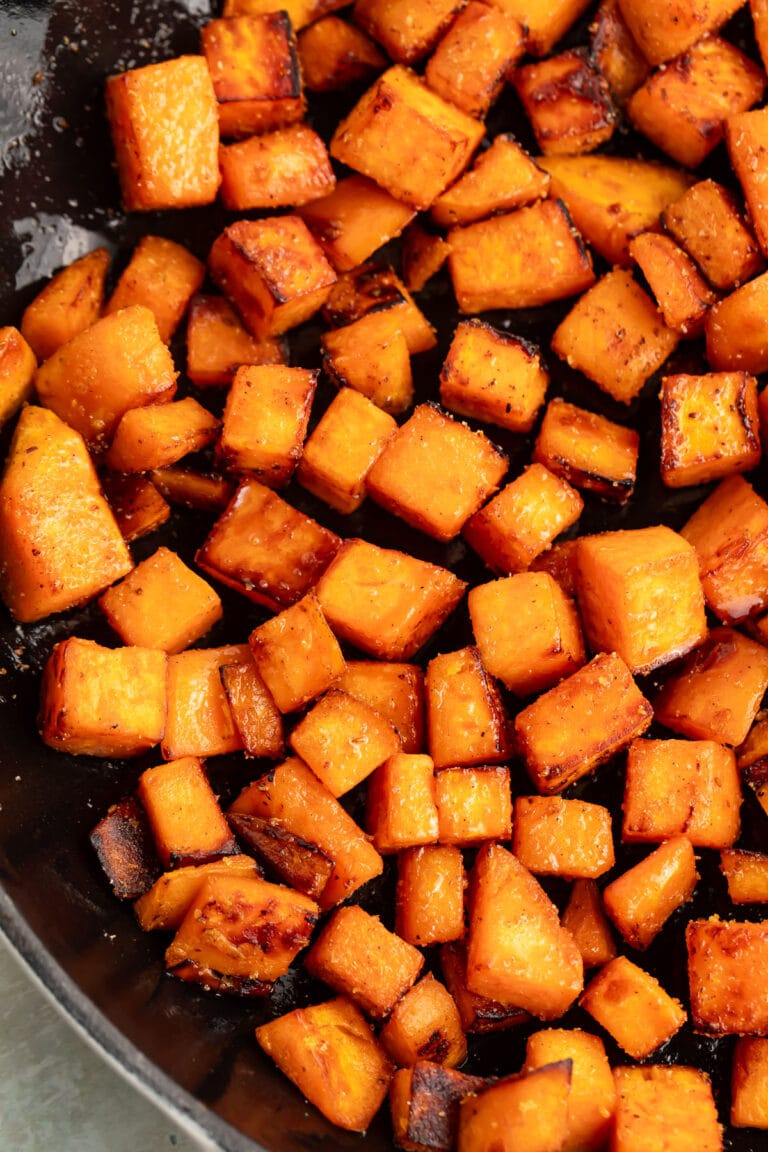Chicken Savoy
Inspired by the beloved, iconic dish from New Jersey’s Belmont Tavern, this recipe for homemade chicken savoy is pretty darn close to the original. Juicy, tender, oven-roasted chicken rubbed with a savory blend of garlic, parmesan, and herbs, then finished with a red wine vinegar reduction. It’s surprisingly easy to make on a budget and yields plenty of protein for the whole family!

🍗 What Makes This Recipe So Good
- Chicken savoy is jam-packed with layers of flavor! The chicken is bone-in, skin-on which allows the meat to stay super juicy, tender and moist. You’ll brown the skin first, then top each piece of chicken with an parmesan, herb and olive oil paste, and bake it until the skin gets crispy. Finished with red wine vinegar for a tangy and delicious bite.
- A whole chicken is a great economical way to feed your family! Buying a whole chicken is usually a better value than just individual parts, and cutting it into pieces is easier that you think. And you can make a homemade bone broth with the carcass.
- This Italian-inspired is famous and beloved at the Belmont Tavern in New Jersey. Recreate this version inspired by it in the comfort of your own kitchen! Serve it with any sides you enjoy such as roasted potatoes and carrots, roasted cauliflower, broccoli or mashed potatoes.
👩🏼🍳 Chef’s Tips
- If you’ve never broken down a whole chicken before, you’ll want to start by making sure all the giblets are removed. You’ll need a super sharp knife and a plastic cutting board. With the chicken breast side up, start by cutting each leg, including the drumstick and thigh. You can keep them attached or cut them in 2 pieces along the end of the drumstick. Then you’ll cut the breasts by slicing along the center bone until you have a whole breast, then repeat on the other side. Last you’ll cut the wings off the breasts. Keep the skin on for this recipe.
- When blending the paste, if it feels too thick, you can add a little more olive oil. If it’s too thin, then add more parmesan and herbs.
- Be cautious when using a cast iron skillet as the handle will get really hot. Use a glove or kitchen towel to avoid burning your fingers.
- This recipe is really great for meal-prep, so you can have a protein ready to go for days. Store the cooked chicken savoy in an airtight container refrigerated for up to 4 days.

🥘 More Delicious Recipes You’ll Love
- Chicken and Spinach Manicotti
- Southern Pineapple Casserole
- Chunky Chicken Noodle Soup
- Pasta Napoletana
- Chicken Roulade
- Popcorn Shrimp In The Air Fryer
- Grilled Chicken And Rice
- Chicken And Stars Soup

Chicken Savoy
Equipment
- blender
- oven
- cutting board
- paper towels
- large cast iron skillet (or similar oven-safe skillet)
- stovetop
- tongs
- spoon
- meat thermometer
- large plate
- aluminum foil
- wooden spoon
Ingredients
For the Parmesan Herb Paste
- 3 tablespoons olive oil
- ⅓ cup grated parmesan
- 2 teaspoons dried oregano
- 1 ½ teaspoon dried thyme
- 2-3 cloves garlic (peeled)
- ½ teaspoon salt (more or less to taste)
- ¼ teaspoon freshly ground black pepper (more or less to taste)
For the Chicken
- 1 whole chicken (approximately 4-5 pounds, cut into 8 large pieces)
- salt (to taste)
- freshly ground black pepper (to taste)
- 3 tablespoons olive oil
- ⅔ cup red wine vinegar
To Serve (All Optional)
- chopped fresh parsley (to garnish)
- roasted potatoes
Instructions
- Add olive oil, parmesan, garlic, oregano, thyme, salt, and pepper to blender. Blend until ingredients are fully combined, pausing to scrape down sides of blender as needed. When mixture is combined and develops pasty consistency, set blender aside.
- Preheat oven to 425° Fahrenheit. Place chicken pieces on cutting board and pat chicken completely dry on all sides with paper towels. Season chicken pieces on all sides with salt and pepper to taste, then set chicken aside.
- Heat large cast-iron skillet over medium-high heat. When skillet is warm, add olive oil and continue heating, swirling skillet occasionally to fully coat pan in oil, until oil is hot and shimmering.
- When oil is hot, place chicken pieces in skillet skin-side down. Cook, undisturbed, 7 to 8 minutes or until skin is brown and releases easily from skillet. Note: If skin sticks to skillet, allow to cook another 1 to 2 minutes undisturbed. Check again and repeat as needed until skin releases easily. Be careful not to burn chicken.
- When skin of chicken is browned and releases easily from skillet, carefully flip chicken over so skin-side faces up. Evenly spread or brush parmesan-herb paste over skin of chicken, using entire batch of paste to cover chicken well.
- Immediately place cast-iron skillet in preheated oven. Roast chicken pieces 18 minutes, then begin checking internal temperature of each piece for doneness. Chicken pieces are ready when internal temperature reaches 160° Fahrenheit. Note: Exact cooking time will vary based on size and thickness of chicken pieces.
- As chicken pieces reach desired temperature, transfer pieces from skillet to plate and cover with foil to keep warm. Continue roasting chicken and checking temperatures until all chicken pieces have reached 160° Fahrenheit and have been transferred to plate. Set chicken aside, still covered with foil.
- Discard any liquid from cast-iron skillet and return skillet to medium-high heat. Add red wine vinegar to skillet and deglaze pan, scraping up any browned bits of chicken or parmesan-herb paste that may be stuck to bottom of skillet. Simmer vinegar over medium-high heat 4 to 5 minutes or until liquid has reduced slightly.
- Transfer chicken pieces to serving plates or serving platter. Spoon red wine vinegar reduction over chicken, garnish with parsley if desired, and serve chicken warm with preferred sides.
Notes
- Chicken: The 4-5 pound weight includes the bones of the chicken, so keep that in mind if you’re scaling the recipe up for a larger group.
- Skillet: If your cast-iron skillet is too small for a whole chicken, you can use 2 skillets simultaneously, or you can work in batches using a skillet and a baking dish. See instructions below for batches.
To Cook Chicken Savoy in Batches
- Follow steps 2 through 4 to pan-sear half the chicken pieces.
- After applying the parmesan-herb paste to this batch, transfer the chicken to a baking dish and cover the dish with foil to retain heat.
- Repeat steps 2 through 4 to pan-sear the second batch of chicken.
- After applying the parmesan-herb paste to the second batch, remove the foil from the baking dish. Place both the baking dish with chicken AND the cast-iron skillet with chicken into the oven.
- Follow instructions above for roasting chicken and checking temperature.
- Once all chicken from cast-iron skillet has been transferred to plate, return cast-iron skillet to stovetop and finish instructions above for red wine vinegar reduction. When all chicken from baking dish has been transferred to plate, baking dish is no longer needed for this recipe.
Recipe costs provided are approximate. Actual cost per recipe & serving will vary by location, store, brand, etc. Approximate cost shown does not include costs for any optional ingredients.
Nutrition
Nutrition Disclaimer
Number of total servings shown is approximate. Actual number of servings will depend on your preferred portion sizes. Nutritional values shown are general guidelines and reflect information for 1 serving using the ingredients listed, not including any optional ingredients. Actual macros may vary slightly depending on specific brands and types of ingredients used. To determine the weight of one serving, prepare the recipe as instructed. Weigh the finished recipe, then divide the weight of the finished recipe (not including the weight of the container the food is in) by the desired number of servings. Result will be the weight of one serving.











